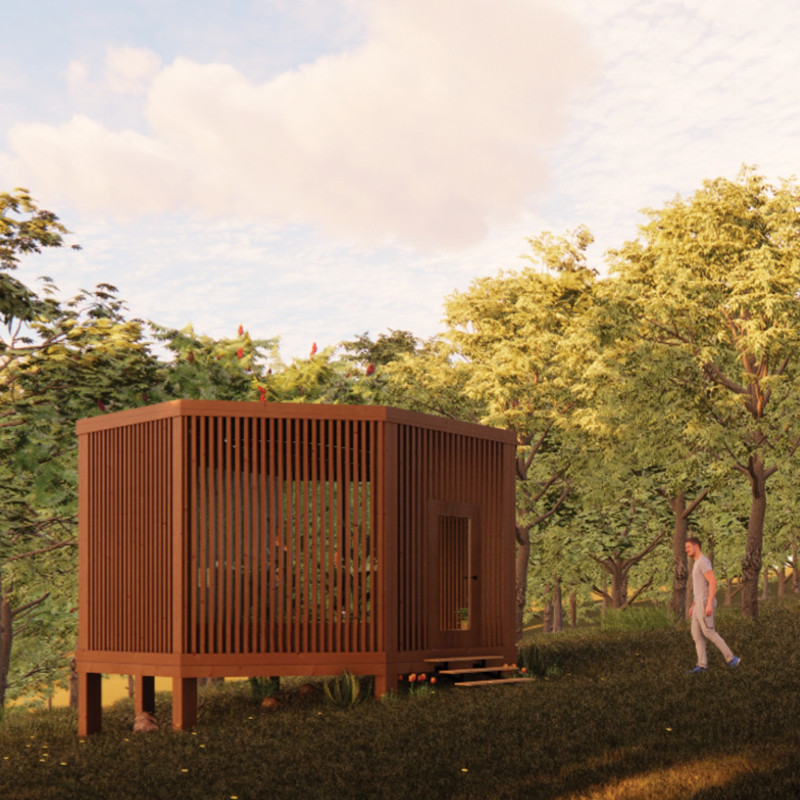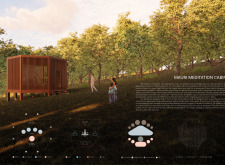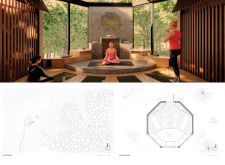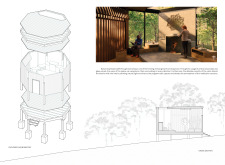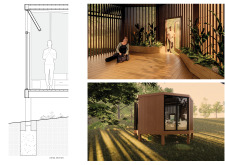5 key facts about this project
The cabin boasts an octagonal shape that fosters a sense of wholeness and unity. The open layout promotes an unobstructed flow of movement while maximizing interactions with the surrounding landscape. Large glass panels are strategically placed to provide extensive views and natural light, effectively blending the interior with the exterior. The overall design emphasizes a harmonious relationship with nature, encouraging users to immerse themselves in the tranquil surroundings.
Unique Design Approaches
The Mauri Meditation Cabin incorporates distinctive design strategies that set it apart from similar projects. One notable feature is the use of materials such as wood, glass, concrete, and natural stone. This material palette not only enhances the aesthetic appeal but also promotes sustainability. The use of vertical wood slats in the façade allows for a rhythmic visual element while optimizing light and air circulation. The expansive glass panels minimize the separation between indoor and outdoor spaces, enriching the user's experience of nature.
The cabin's interior is organized around a central meditation platform, which acts as the focal point for reflective practices. The arrangement of seating around this platform facilitates communal interactions while still allowing for individual contemplation. The balance between private and shared experiences is a core principle in the design, promoting a sense of community among users.
Architectural Integration and Landscaping
The thoughtful placement of the Mauri Meditation Cabin within its landscape enhances its overall functionality. The structure's connection to the site's topography allows for the creation of pathways and outdoor spaces that encourage exploration and contemplation. The landscaping is integrated to complement the architectural design, with gardens surrounding the cabin that foster a sense of peace and well-being.
The design also addresses sustainability, exemplified by the building's minimal footprint and its alignment with biophilic principles. By creating a space that is both a retreat and a connection point to the environment, the Mauri Meditation Cabin exemplifies a modern approach to architecture that prioritizes user experience and ecological sensibility.
For further insights into the Mauri Meditation Cabin, including architectural plans, sections, and detailed drawings, readers are encouraged to explore the full project presentation. Engaging with these elements will provide a deeper understanding of the architectural design and the innovative ideas that underpin this meditation space.


